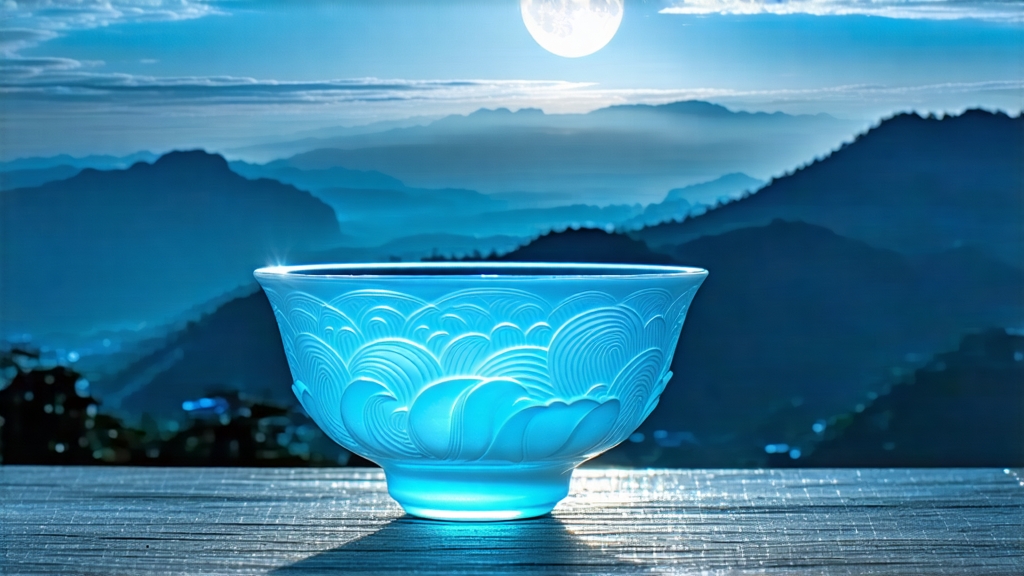
Tucked high on the forested ridges of Yunnan’s Simao and Lincang prefectures, where the Mekong carves silver ribbons through morning mist, a tea that listens to the moon is coaxed into being. International catalogues usually list Bai Hao Yin Zhen, Bai Mu Dan and Shou Mei as China’s white-tea trinity, yet in the shadow of 2,000-year-old tea forests another style—Yue Guang Bai, literally “Moonlight White”—has quietly matured into one of the most seductive white teas of the 21st century. Unlike its Fujian cousins, Yue Guang Bai is born of Yunnan’s indigenous Da Ye (large-leaf) assamica varietal, the same genetic stock that yields pu-erh. The result is a tea that marries white tea’s feather-light touch with the tropical fruit depth and mineral backbone of southwest China’s ancient terroir. To understand it is to rethink what “white” can mean in the lexicon of tea.
Historical threads are delicate; Yue Guang Bai has no imperial edicts or Tang-dynasty poems to flaunt. Oral histories collected from Bulang, Dai and Hani tea farmers agree that the practice of “moon-withering” began in the late 1990s when a small Jingmai mountain factory sought a cooler, slower alternative to sun-withering during an unusually hot spring. Workers spread the freshly picked buds and single leaves on open-air bamboo trays during the night, allowing the plateau’s sharp temperature drop and gentle dew to arrest oxidation enzymes while encouraging slow, enzymatic transformation. The silhouette of leaves glowing under a full moon reminded villagers of a white-haired sage; the name Yue Guang Bai slipped naturally into local speech. By 2005 the tea had travelled to Kunming, and by 2012 it was appearing in specialty cafés from Brooklyn to Berlin, its downy two-tone leaves—black on the upper surface, silvery white on the underside—arresting the eye as surely as its flavour seduces the palate.
Although no national standard yet codifies Yue Guang Bai, producers observe three internal grades that mirror leaf composition and picking window. “Moonlight Needle” consists solely of unopened buds plucked in the first ten days of March; the liquor is pale champagne with notes of honeydew and fresh alfalfa. “Moonlight Bud & Leaf” pairs one bud with the first unfolded leaf, yielding a more aromatic cup reminiscent of lychee and magnolia. Finally, “Moonlight Large Leaf” contains buds plus two leaves, offering a rounder body and a finish of dried apricot and wet slate. All grades share the signature bicolour leaf, a result of night withering that allows the upper epidermis to oxidise slightly while the down-covered underside remains silver.
Crafting Yue Guang Bai is a dialogue between human restraint and nocturnal climate. Picking begins at dawn while dew still beads the ancient trees; buds and leaves must arrive at the mountain workshop before 9 a.m. to prevent compression heating. Once sorted and gently fanned, the leaves are laid on perforated bamboo racks in layers no thicker than two centimetres. From dusk to dawn the racks remain outdoors under mesh canopies that keep off insects yet welcome the moon’s photons and the forest’s cool air. Relative humidity hovers around 85 %, allowing bound moisture to exit the leaf slowly; enzymes convert catechins into gentler theaflavins while lipids break into aromatic aldehydes that later manifest as peach and gardenia. At sunrise the trays are moved into a shaded loft where they rest for an additional 24 to 36 hours; no rolling, no pan-firing, no baking—just quiet withering until moisture drops to approximately 10 %. A final half-hour “moon bake” employs charcoal embers no hotter than 45 °C, enough to sterilise surface microbes yet preserve the tea’s latent vitality. The finished maocha rests for at least one month so that residual moisture can equilibrate; many aficionados age small batches for several years, discovering that Yue Guang Bai evolves from bright florals into deeper fig and sandalwood tones without ever veering into the mustiness of post-fermented teas.
Water is the traveller’s first tool when approaching this tea abroad. Because Yunnan large-leaf cultivars are rich in amino acids yet